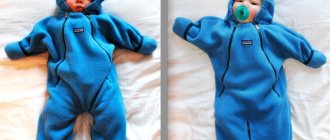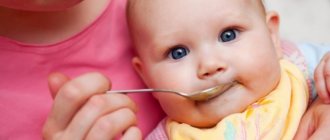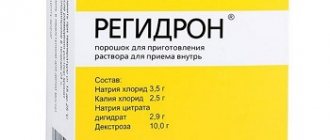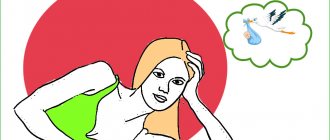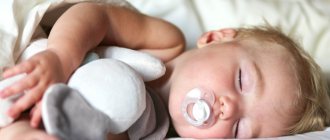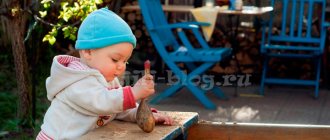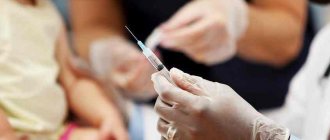Piercing methods
There are several ways to pierce a girl's ears. In the days of our grandmothers, punctures were carried out exclusively with a needle; today manipulations are carried out more humanely and less traumaticly. There are three main ways to make neat holes in the earlobes for earrings.
Studex 75 system
This is the most innovative method of ear piercing, which came to Russia not so long ago. The Studex System 75 is a disposable piercing device designed and manufactured in the USA. In appearance, the device is similar to a stationery stapler. According to the principle of operation, there is also something in common. This method is considered the most humane for piercing children's ears. The device pierces the skin of the earlobes completely silently, so the child will not be afraid at the moment the earlobe is pierced.
Among the disadvantages of the innovative system is a rather limited selection of decoration options. Parents will not be able to immediately insert into their child the earrings they have chosen and bought, since the device is filled with specific medical earrings and there is no other option. True, large salons that have such technology offer an assortment of medical jewelry, some even have a special children's design. The composition of medical earrings resembles the composition of surgical instruments - it is titanium and hypoallergenic medical steel.
Another disadvantage is the relatively high cost of the procedure. On average, it is 2-2.5 times higher than regular ear piercing. But “System 75” opens up enormous opportunities for parents of infants who do not want to injure their child or frighten him. The device can pierce a child’s ears even when he is sleeping. The procedure is simple - the device is brought to the earlobe, the master presses the trigger - and the earring ends up in the ear, already fastened.
Puncture using a special “gun”
This is also a hardware way to do a piercing, but for the puncture they use a device that really looks very much like a gun. The device is reusable, which theoretically increases the likelihood of infection. However, before use, both the earlobe and the part of the device that will come into contact with the skin must be disinfected.
The “gun” shoots a sterile “stud” into the place on the child’s earlobe, designated in advance with a thin marker. The craftsman will not have to fasten the “stud” manually; this process occurs automatically. The undoubted advantages of the method are the speed and relative painlessness of the process. However, the “gun” works noisily, the baby will feel and hear the moment of puncture, which can frighten him.
Another disadvantage is the lack of sterility of the method, because the device is reusable and a lot will depend on how sensitive the salon is to disinfection issues. In addition, history knows examples when the device “stuck” and did not fire at the right moment. The “carnations” themselves are made of medical steel, they are hypoallergenic, but their choice is very limited.
Manual puncture
This is an old and time-tested method. It cannot be called painless, but it opens up additional opportunities. So, when piercing with special piercing needles, the master has the opportunity to select the size of the needle according to the size of the lobe. An experienced master guesses the right size almost intuitively, without damaging the nerve endings of the lobe.
After manual piercing with a needle, it is possible to insert into the ears not “studs” and needle earrings, but the pair of jewelry that the parents lovingly chose for their daughter in a jewelry store. This is convenient because later you will not need to replace temporary medical earrings with permanent ones. The method is difficult for children to understand, because one type of needle can lead some children into a state of hysterics. Moreover, it cannot be called bloodless.
This procedure costs much less than the automatic methods described above. But, taking into account all the disadvantages and disadvantages, the method is not very popular for children's piercing, and this is quite justified.
Piercing procedure
Of course, all parents are curious about how their children’s ears are pierced: what manipulations the specialist will perform and whether it will hurt their baby. The younger the child’s age in this case, the more terrible it is for adults for their child. To get rid of unnecessary panic, you just need to psychologically prepare yourself for the procedure of piercing your daughter’s ears by learning how it is carried out in stages.
- First, the specialist examines the girl for any contraindications for this procedure. If there are injuries, wounds, problems, he will advise you to first wait for tissue healing and recovery. It is advisable to go through this stage first, in advance, so that the specialist can accurately determine the time when the child’s ears can be pierced, in accordance with his age and state of health.
- The modern method of piercing a child’s ears involves the use of a “gun” - a special tool that “shoots” disposable needles, which are stud earrings made of surgical stainless steel. This method is fast, convenient and allows you to pierce a child’s ears as painlessly as possible, without complications or consequences.
- After everything is finished, do not forget to check whether the holes were made evenly. Quite often, parents complain that their child’s ears were pierced crookedly, even in a reputable salon. If it seems to you that this is so, politely, without scandals, ask a specialist to give an explanation on this matter. If the difference in distance is too noticeable even to the naked eye, you will most likely have to wait until one hole is closed and make a second one, more symmetrical to the existing one.
When the procedure is completed, without leaving the salon, do not forget to ask a specialist how to care for your child’s pierced ears: what is possible, what is not, what to treat, how long the healing process will take. Remember all his advice or write it down, take a phone number for consultation just in case if something unexpected happens. And after that, get ready for the final stage - caring for your pierced ears during the healing period.
How to care for pierced ears?
After the ears are pierced, the piercer usually tells the parents how to care for the wounds so that a proper and painless tunnel in the ear is formed faster. The process will indeed require concentration and mandatory adult supervision. First of all, this concerns the treatment of wounds. The puncture sites should be treated daily, 3-4 times a day. It is best to carry out the procedure in the morning, lunch and evening.
The mother should carry out the treatment only with clean hands. Hydrogen peroxide or any other antiseptic is instilled into the wound - “”, “Chlorhexidine”. Children should not treat their ears with alcohol or alcohol-containing solutions.
After instilling the antiseptic, the earring is carefully moved back and forth if it has a bow (such earrings can be inserted into ears pierced using the traditional manual method using a piercing needle). If the puncture was carried out using modern methods - with a “pistol” or “System 75”, then there is a “stud” in the ear
After instillation of the antiseptic, it is slightly moved back and forth and carefully scrolled clockwise.
For some time after ear piercing, some changes should occur in the child's life. The girl does not need to be bathed for the first 5 days after the puncture. This also applies to visiting the bathhouse, sauna, and swimming pool. There is no need to take your child to a public pool for the first 3-4 weeks after the puncture. With water, pathogenic bacteria and viruses can enter the wound; water chlorination agents can cause serious inflammation. For the first five days, it is better to refrain from washing your hair. There is no need to swim in the sea or river for a month.
While the holes in the lobes are healing, proper hair care is important. It is advisable that the hair does not come into contact with the wounds. A girl with a short haircut has nothing to worry about, but if her hair is long, it is best to keep it constantly tied up in a high hairstyle - a ponytail, a bun at the back of the head, a basket braid. You should be very careful when combing your hair; you should not touch the earring with the comb.
It is better to leave physical activity and active entertainment for later. While running, jumping, playing sports, or dancing, sweating increases, and sweat (a rather caustic substance) causes additional inflammation in unhealed wounds of the earlobes. If the child is small, it will be quite difficult to ensure that the baby does not touch her earlobes with her hands, but this should be done.
During this time, if the wounds are properly cared for, the holes cease to appear, are covered from the inside with an epithelial layer, and you can change the first earrings for any others without any particular fears. The main thing is that these other jewelry are made of high-quality gold without nickel impurities, so that they are not bulky and heavy and have a comfortable and reliable clasp.
It can be psychologically quite difficult to remove the medical “studs” that have already become habitual during the first month for the first time. Mom is scared because she is afraid that she will not be able to put other earrings in her ears and cause her daughter severe pain.
If you do everything carefully, it will not hurt the child. You can remove the carnations in the following way:
Prepare hydrogen peroxide and a piece of clean gauze or sterile medical bandage. Wash your hands, sanitize them, and place the child’s head on your lap. With one hand you should grab the front part of the earring, and with the other hand, the stud clasp and slightly begin to pull the clasp towards the edge
It is important that the second hand at this moment securely fixes the earring stem so that it does not move in the ear and does not cause pain to the child. A common problem is the tight fasteners of medical studs. Get ready for the fact that it will not give in easily, especially since most of these earrings fasten with two clicks.
Sudden movements are prohibited. Only smooth and careful, but decisive movements. It is important to distract the child, calm him down so that he does not jerk his head or resist.
Inaccurate movements can lead to injury to the earlobe. After the clasp is removed, you need to carefully remove the stud rod with a twisting motion, lubricate the lobe front and back with hydrogen peroxide and leave the child alone for 15-20 minutes. After this time, the lobe is again lubricated with peroxide, and new earrings are treated with it. The edge of the earring bow is carefully felt for the hole and the bow is carefully inserted into the lobe. If at the same time droplets of ichor or pus appear, it’s okay
After inserting the earring, it is fastened and the lobe is once again treated with an antiseptic.
Opinion of pediatricians and psychologists
Pediatricians do not recommend piercing the ears of a child under 6 months of age. This is due to the fact that the earlobe is still very small, and the baby is not assiduous. Therefore, the puncture may not be even, which increases the likelihood of infection. Until six months, the baby’s immune system is still very weak, and even the smallest amount can develop into a large source of infection.
Abroad, it is a popular practice to pierce the ears of newborn girls while still in the maternity hospital.
So when is it possible? Pediatricians recommend performing this procedure on a child at the age of 3-4 years. Such children understand their parents well; they already know that they should not pull earrings, rub a wound or put jewelry in their mouth. Children of kindergarten age quickly forget pain and discomfort.
What will psychologists say to all this? Psychologists recommend waiting for a conscious age, when the child can make his own decision and desire to wear earrings. Typically, parents receive such a request from girls 5-10 years old.
At this age, children understand the seriousness of the procedure and can independently care for punctures in the lobe. Experts recommend that parents, before carrying out earlobe piercing procedures for girls, evaluate the child’s character.
Important! After 12 years of age, the risk of colloid scars increases.
First of all, the girl’s psychological readiness before the painful procedure should be assessed. Talk to the child, tell him that he needs to sit quietly and be patient.
If your daughter has a hard time persevering, then even with the master’s maximum efforts, the puncture may not be even. Over time, the asymmetry will become very noticeable and will bring uncertainty to the baby.
Another factor to postpone the procedure is a low pain threshold. It often happens that having pierced one ear, the children don’t want the other, and it takes a very long time to persuade them. Therefore, there is no need to rush.
Description of the procedure
To pierce the ears, they use a special device that actually looks like a gun. The gun itself is reusable, but the “stud” earrings loaded into it are sterile.
To begin with, parents will have to choose the carnations themselves. They are made of medical steel, which is widely used in surgery and, due to the composition of the alloy, does not cause an allergic reaction and prevents inflammation.
The choice of “studs” for the pistol ear piercing method is, unfortunately, small. It is much richer when using another method - the innovative “System 75”. For the “gun”, the selected earrings are, in fact, a bullet, which under mechanical influence will act as a needle. This will automatically fasten the earring behind your earlobe.
The procedure takes only a few minutes:
- First, the master treats the lobes with an antiseptic, then, using a marker, marks the points where the jewelry will very soon be displayed.
- If the location of the punctures suits the girl and her parents, the “gun” is loaded with pre-selected earrings, brought to the intended point and fired.
- Similar actions are carried out with the other lobe. At this point, the piercing is considered complete, the master gives recommendations for caring for the ears at first and sends the child home.
Is it possible to pierce children's ears with a gun?
It is not recommended for children or adults to pierce their ears with a gun. The gun cannot be properly sterilized, which in itself is a contraindication. The technology itself raises many questions - when using a pistol, the selected place is not pierced, but seems to be torn. As a result, instead of a tiny hole with perfectly smooth edges, which remains after a needle passes, a lacerated wound is formed. This cannot be seen with the naked eye, however, the resulting micro-tears and cracks are guaranteed to hurt and attract pathogens.
If you think that piercing the ears with a gun will be less painful for children, this is a misconception.
The procedure for piercing the earlobe with a professional needle is simple and consists of 6 stages:
- Marking.
- Treating the earlobes with a disinfectant spray.
- Removing the sterile needle from the package. In professional salons, the needle is always taken out in front of the client.
- Performing a puncture.
- Place the jewelry into the cavity inside the needle and thread the clasp through the hole.
- Dispose of used needles in a special container for medical waste.
In skillful hands, the needle passes the intended point at the desired angle and so quickly that the client does not have time to feel the pain. Unlike a gun, the needle is completely sterile. The smooth edges of the puncture heal very quickly, the risk of damage to bioactive points is reduced to zero.
How to properly pierce a child's ears?
In order to avoid, as far as possible, complications that can be caused by incorrectly performing this procedure, you should definitely consider the following recommendations:
In what cases should a child’s ears not be pierced?
There are various situations in which ear piercing for a small child should be postponed.
Otherwise, after the procedure, he may experience a number of serious complications, in particular, metabolic disorders, changes in the functioning of certain internal organs and systems, loss of sensitivity, and so on.
Contraindications for ear piercing are the following:
How should a child's ears be treated after a piercing?
If your baby does not have any contraindications, and you still decide to take this important step, be prepared for the fact that after the procedure you will have to carefully care for her ears for some time.
As a rule, caring for pierced ears is carried out according to the following instructions:
- For a month, starting from the second day after the piercing, you need to twist the earring several times a day with clean hands. At the same time, it is strictly not recommended to remove it from the ear;
- In the morning and evening, you should thoroughly wipe the ear and puncture site with hydrogen peroxide. Some experts advise using alcohol for this, however, this remedy is not suitable for a small child;
- After any contact with dirt or water procedures, the wound must be treated additionally;
- After a month, you should very carefully remove the earrings from your ears and treat the puncture sites with hydrogen peroxide. After a few hours, you need to repeat the procedure and also wipe the earrings themselves with an antiseptic, after which they need to be reinserted into your ears.
Today there is such a unique remedy for treating pierced earlobes as medical glue. This substance is applied immediately after the puncture directly to the open wound and is not touched again. In this case, no additional ear treatment will be required. All you have to do is wait for the glue to gradually come off on its own.
What to do if a child’s ears fester after a piercing?
If one or both earlobes become inflamed, increase in size, and pus begins to ooze from them, you should immediately consult a doctor.
This situation means that the wound has become infected, and without proper treatment it can lead to serious complications, especially in a small child.
Usually, if a child’s ears do not heal and fester for a long time after the puncture, the frequency of treatment with hydrogen peroxide is increased to 7-10 times a day. In addition, your doctor may recommend that you use a weak solution of potassium permanganate to wash the wound.
In the morning and evening, the ear should be lubricated with a thin layer of cream that has an antimicrobial and anti-inflammatory effect, such as Levomekol or Levosin.
How long does it take for a child’s ears to heal after a piercing?
An important question is how many days after a piercing should a child’s ears be treated? On average, the wounds heal after the procedure of piercing the ears of a small child with a pistol in approximately 10 to 20 days. Meanwhile, in any case, the puncture sites should be treated for at least a month, regardless of how the healing progresses.
In addition, it should be taken into account that in the cold season the child constantly wears a cap on his head, which prevents the wounds from healing, so this process may take much longer.
Ear piercing today is a virtually painless procedure, but if the ears are not properly cared for after the piercing, it can be quite dangerous for the child’s body.
Be very careful and consult a doctor about the slightest symptoms of suppuration or inflammation to avoid serious complications. Otherwise, the consequences of this procedure may be unpredictable.
More information
Once you've had your ears pierced, it's important to take proper care of them so that they heal completely and you can wear the variety of earrings waiting in your earring box. If the wound gets infected, you will have to let the holes heal
Learn to care for newly pierced ears and watch for signs that you may need medical attention.
How to pierce a child’s ears: features of preparation for the procedure
In order for everything to go well, you need to prepare for the ear piercing procedure. To do this you need:
- Choose earrings with a durable clasp. There should be no sharp corners or pendants. The best option is considered to be special medical stud earrings.
- Before going to the center, you need to wash your baby’s hair. This will prevent dirty particles from getting into the wound. In addition, you won’t be able to wash your baby for a few more days.
The ear piercing procedure has its own characteristics.
- A specialist processes the ears and makes their surface sterile. The earrings are also processed.
- Then marks are made in the center of the earlobe, where the instrument will be directed directly. It is very important that the puncture is in the middle of the earlobe, since any deviation can affect the function of the organs of hearing, vision, and speech.
- The puncture itself is carried out with a special pistol. It can be reusable or disposable. It may be silent or produce a characteristic click.
- A nail is inserted into the gun and, during the puncture, it passes into the resulting hole.
Before the procedure, the child needs to be prepared so that he does not move or twitch, and be told that there will be a click that there is no need to be afraid of. In general, the entire procedure is painless and quick.
Where to pierce a child's ears
Children's ears need to be pierced only in those medical institutions and cosmetology centers that have a reputable specialist. Requirements for a specialist and clinic:
- The employee must have a medical education.
- A health record where the results of the doctor’s examinations will be recorded.
- Everything in the room where the procedure takes place must be sterile and clean.
- Only sterile disposable materials should be used.
- There must be disposable gloves in the office.
Mom should not hesitate to check the availability of these items. You can even inspect the premises of perhaps several clinics or cosmetology centers in advance. Based on the inspection, you need to choose the most suitable option.
How children's ears are pierced with a pistol video
There are conflicting opinions about pistols today. On the one hand, a puncture with a pistol occurs quickly and without pain. Agree, this is important when it comes to a child. But on the other hand, it is impossible to completely sterilize a pistol due to the peculiarities of its design. Therefore, when piercing with a gun, there is always a risk of introducing an infection into the child’s body.
The pistol, when piercing the ears (the video clearly shows this), makes a sharp sound. The child may twitch involuntarily when he hears it. Thus, it is easy to get injured and reduce the quality of the puncture. Today there are disposable pistols that do not have these disadvantages. However, a puncture with their help will cost you much more.
Caring for ear cartilage after piercing
If you don’t want your new piercing to heal for a long time and painfully, give your ear proper care, following all the specialist’s recommendations. The process itself is not quick and can take several months.
Many people have helix piercings even though they may not realize it. Many individuals refer to their helix piercing as “my ligament piercing,” and the range referred to is the top of the ear. It's exceptionally easy to see someone have their ear cartilage pierced and maybe a couple different piercings showing up high on the ear. This is not a “ligament piercing,” as such a variety of people are happy to report.
Calling a helix piercing a ligament piercing is a misnomer, in light of the fact that your entire ear is made of ligament. Any piercing that is not contained to your ear cartilage is a ligament piercing. Tragically for some people, it was apparently pierced in a shopping mall through a penetrating weapon. Obviously, you will actually need a barbell, and your piercer may believe that this is an acceptable choice for you, so do what you are comfortable with.
Adhere to the following rules:
do not remove the earring for at least a month after it has been put on; do not let the wound get wet in the first few days, postpone swimming in a pool or pond, postpone a visit to an intensive shower, bathhouse, sauna; A special antiseptic will help relieve pain and prevent tissue swelling after a puncture in the cartilage, but do not confuse it with alcohol, which will burn the wound; when treating the ear with a solution, make sure that the composition washes not only the wound, but also the channel itself, to do this, scroll the earring in the hole; if you have worked hard in sports or physical labor, additionally treat the operation site, clearing it of sweat and dirt; and the most important rule is that in order to get yourself a fashionable piercing, contact only trusted professionals who have sterile instruments on hand.
The main true benefit of a band or ring is that it is better for swelling, and ring-pierced slots and loops tend to mend quicker, but to each his own! You will sit on the piercing site, which often resembles a dental professional's seat, and your piercer will make a seal on your ear. You have the chance to take the gander to the seal and approve or subject the subject to the area, once the area is populated, your piercer will push the needle through the ear as you exhale.
Decorations for all intents and purposes are quickly built in, and once the ball has been secured, your stunning new piercing is complete! This is an extremely safe puncture and the agony should only last for a short time. This penetration is a little confusing in light of the fact that the piercer needs to accurately measure the space between the piercings, however this should not be a problem for the expert. The most common types of eardrum repair procedures include myringoplasty, tympanoplasty, and ossiculoplasty. Recovery usually occurs after an eardrum repair procedure. Complications may occur, but they are rare.
This surgery can also be used to repair or replace the three tiny bones behind the eardrum.
To emphasize their individuality, girls get a beautiful ear cartilage piercing. Such decoration will please the eye and cause a minimum of hassle if the procedure is carried out by a professional in compliance with all safety rules. Before you pierce your cartilage with a needle or catheter, you need to know all about the risks. If you have already had an ear piercing or are just dreaming about it, then be sure to check out the latest information in our article.
The eardrum is a thin membrane between your outer ear and your middle ear, which vibrates when sound waves hit it. Repeated ear infections, surgery, or injury can cause damage to your eardrum or middle ear bones that need to be corrected with surgery. Damage to the eardrum or bones of the middle ear can lead to hearing loss and an increased risk of ear infections.
Try to prevent water from getting into your ear while you recover. Avoid swimming and wear a shower cap to drink water when you bathe. Don't "pop" the ears or nose. If you need to sneeze, do so with your mouth open to prevent pressure from building up in your ears.
We prepare everything you need
Having understood the technique of how to pierce your ears at home, prepare everything you will need in the process. Find a pen or marker to mark the puncture site. You can replace writing utensils with a toothpick dipped in iodine. The last option will be the safest for your health. Find sterile cotton wool in your medicine cabinet, which you will need to treat your ears before and after piercing, as well as the needle itself you will use. Treatment is carried out with medical alcohol. In extreme cases, it can be replaced with alcohol tincture or vodka. Prepare hydrogen peroxide as well. Well, the most important thing is the needle. It should be of medium thickness, very even and preferably long, so that it is comfortable to hold in your hand and drive into the lobe.
Pros and cons of feeding with compound feed
Specialized feed meets all the necessary requirements for poultry to grow healthy, gain weight, increase the number of birds, and ensure that the meat is tender and tasty. Compound feed for turkeys in ready-made kits has a number of advantages. All ingredients are balanced, so the feed is well digestible and gives the birds proper weight gain. The finished mixture contains everything necessary so that the turkey does not get sick and grows properly without additional vitamin supplements.
The farmer does not need to mix the mixture himself or select the components in accordance with the required proportions. The composition of feed for turkey poults allows you to reduce the time required to raise poultry. The turkey quickly gains weight, which increases the profitability of the farm. Using ready-made turkey feed makes the meat more tender, tasty and nutritious.
The disadvantage of feeding turkey poults with prepared feeds is their relatively high price. Although owners of large farms receive significant discounts when purchasing in bulk. In order for all of the above benefits to work, you should choose food from well-known manufacturers, as well as kits for the appropriate age of the bird.
Mechanism of action of COX 2 inhibitors (nimesulide, meloxicam)
During inflammation, the cyclooxygenase 2 isoform is formed; when taking a COX 2 inhibitor, it is quickly absorbed from the digestive tract, 89% of the active substance enters the blood. Once in the bloodstream, the drug replaces receptors that are receptors for COX 2, thus reducing the number of inflammatory markers (prostaglandins).
In addition to the blockade of these receptors, competitive replacement of COX 1 receptors also partially occurs, especially when taking drugs of this group for a long time or when the therapeutic dosage is exceeded.
A feature of this group is a decrease in selectivity with long-term use or use of the drug in large doses. Which accordingly increases the frequency of side effects, since under these conditions COX 1-dependent undesirable effects of drugs may occur.
Choosing earrings when piercing a child's ears
Choosing to pierce the ears with a gun involves the simultaneous installation of special studs made of medical steel
If the procedure is performed manually by a craftsman, you should pay attention to the material from which the jewelry is made. The use of jewelry is strictly not recommended
But the best option may be products made from titanium alloy or precious metals that do not oxidize when interacting with human tissue. When choosing the first earrings, it is also worth considering that the time before replacing them varies individually: how long the ears heal after a piercing in children depends not only on the chosen material, but also on the proper implementation of the procedure, as well as on the health of the baby. The average period of wearing the first earrings is up to 2 months, then they can be replaced in accordance with the wishes of the parents.
What types of ear piercings are there?
The cost of a puncture depends on its type. The following popular types of punctures are distinguished:
- earlobe piercing is a painless and simple method with quick healing and a wide selection of jewelry;
- orbital cartilage puncture – two punctures in different parts of the ear, which are connected by a ring;
- tunnel - an original multiple piercing of the lobe with the installation of an expander to increase the diameter;
- forward helix – piercing the antihelix, it is possible to make several punctures;
- industrial – double puncture of the upper cartilage, and the holes are connected with a barbell;
- cartilage puncture day - done in a curl, possibly several punctures;
- piercing of the ruuk cartilage - created on a protrusion located opposite the tragus; the choice of jewelry may be limited taking into account anatomical features;
- helix - a puncture at the top of the helix, and the cartilage is captured, but the procedure is very easily tolerated;
- Tragus puncture – performed in the tragus area.
The cost of the service varies depending on the type of earrings. The most popular options are a stud, a labret, a ring, a banana, a fang, a circular, a stud and other more traditional options. When selecting suitable jewelry, the client’s personal wishes, as well as the chosen piercing, are taken into account.
If your ear hurts or festeres after a piercing
After ear piercing there can be different consequences. Immediately after the piercing, swelling will begin. There is no need to remove it - with normal healing it will go away the next day. If this does not happen, and the ear is completely swollen, then suppuration of the lobes or cartilage begins.
Ear piercing inflammation
Tips on what to do if your ear festers:
- The piercing site must be thoroughly treated with an antiseptic. Miramistin is ideal;
- To prevent lumps from forming at the ear piercing site in the future, you need to lightly knead the tissue every day. If numerous granulomas have already appeared, only professional treatment will help;
- It is strictly forbidden to sleep on the side of the punctures. This contributes to poor circulation;
- If a lump has formed there that hurts or itches, it’s a granuloma.
It is a “skin bag” containing pus inside. The most important thing is to remove the purulent fluid. Ichthyol ointment, onion gruel, aloe leaves will help with this; Ear inflammation after piercing - Any of the selected products is applied as a compress to the affected area for several hours. After 2–3 hours, remove the compress and replace it with a new one. After the second time, you need to rinse the hole with hydrogen peroxide; in most cases, this is enough for the pus to begin to come out;
- If the ball is too large, then it is optimal to squeeze out the pus manually. To do this, take a cotton pad and moisten it generously with any available antiseptic. Just below the puncture site, begin to apply light pressure on the lump. Pus will come out of the hole. As soon as this happens, press a little harder. To finally get rid of the granuloma, apply a compress with ichthyol ointment to the piercing site.
In addition, even despite proper care and careful handling of the puncture, the body may begin to reject the earring. During the process, the temperature may rise, the ear will become very sore, and pus may even be discharged. You can try installing an earring made of noble metal or a ring (this will make it easier to wash). If this does not help, you will have to remove the jewelry.
Earrings after ear piercing for children
Laconic titanium earrings without sharp or piercing decor are best suited for a child. Traditional carnations should be abandoned. The complex design of such earrings turns them into “containers” for the accumulation of pathogens.
The use of gold and silver jewelry, as well as earrings made of medical steel and any of the listed materials with titanium coating is strictly not recommended. Such products can cause an allergic reaction and greatly slow down the healing process of children's ears. Earrings made from medical grade steel are banned in many countries due to their nickel content.
Palladium gold earrings can be inserted into fresh piercings. But finding such jewelry will be very difficult and they will not be cheap.
Inexpensive and hypoallergenic bioplastic has proven itself well. However, such earrings should be changed every three months, so stock up on several sets at once.
When the ears are completely healed, you should wait a few months and only then try wearing earrings made of precious metals. At the same time, be prepared that the child’s ears may reject the new decoration. In this case, it will have to be replaced for a long time with the same earrings and the next experiment will have to be postponed for at least a year.
Preparing to pierce your ears with a gun
You shouldn't get your ears pierced if you have a cold.
In order not to provoke negative reactions in the body due to the puncture of the earlobes, you need to make sure that the child has no contraindications to the procedure. To do this, you need to contact a pediatrician and undergo a series of examinations that will exclude the presence of such pathological conditions:
- diabetes mellitus;
- exacerbation of chronic pathology;
- skin diseases;
- bleeding disorders;
- respiratory diseases;
- pre-cold conditions.
Also, there should be no redness, welts or scars on the earlobes. It is recommended to first perform a metal allergy test, which will prevent the development of an allergic reaction.
If there are no contraindications to ear piercing, you need to choose a salon and a specialist who will perform the manipulation. The establishment in which it is planned to pierce the earlobes with a pistol must have permission to perform such a procedure, and the master must have certificates of completion of training in the profile.
On the day of the puncture, it is necessary to wash the child’s hair, since in the first week contact of the holes with moisture is undesirable.
Contraindications and restrictions for ear piercing
The main contraindication to such a procedure is the reluctance of the girl herself. Naturally, this applies to children over 6-7 years old, since at the age of one year no one will be interested in the baby’s opinion.
If a girl refuses to have her ears pierced, she should not insist.
The following may also be grounds for refusing this procedure:
- diabetes;
- low blood clotting;
- eczema skin lesions;
- reduced immunity due to a recent viral or bacterial disease (you need to wait a few weeks);
- children's fear of various medical procedures;
- child's allergies;
- tendency of the skin to scar.
Some of these restrictions are absolute, others are relative - after some time you can return to the discussion of this issue.
Pros and cons of early ear piercing
Pediatricians' opinions on whether a baby's ears should be pierced at an early age are divided into negative and positive. Some doctors believe that such a procedure is dangerous before a certain age. Others claim that the sooner the baby puts on earrings, the less stress she will experience from the piercings. To decide which of them is more right, let's look at the advantages and disadvantages of this procedure.
Pros of the procedure
If you pierce your baby's ears at an early age, he will be able to cope with the pain more easily and will cope with stress much easier, as he will quickly forget about it. In addition, you can promise your child a trip to the circus, cafe or entertainment center to brighten up unpleasant memories.
As mentioned above, ear piercing before 1.5 years is very quickly forgotten, while delaying it for 2 or 3 years will bring stress, which can lead to psychological trauma and fear of various cosmetic procedures in the future. And if the ears are pierced after 10 years, the child may develop keloid scars.
And another advantage lies in the aesthetic side of the issue. Little girls with earrings look very cute, so many mothers try to get their princesses' ears pierced as early as possible.
When to pierce a child's ears?
The question of at what age is it preferable to pierce a child’s ears causes controversy among experts in various fields and parents.
It is necessary to consider the arguments of followers of early accustoming girls to earrings and supporters of late ear piercing.
Arguments for early piercing
The opinion that piercing is necessary for children under one year of age is held primarily by psychologists. They are convinced that if this procedure is carried out at the age of 6-10 months, the child will experience fewer negative emotions.
With early piercing, negative memories disappear almost instantly, but three-year-old children can return to a stressful situation for a long time and, as a result, may refuse to wear earrings altogether.
Mothers also agree with this opinion, but they mostly pursue aesthetic goals. Their main desire is for those around them to perceive the little princess as a girl, and not confuse her with a boy.
In addition, some parents are convinced that piercing the ears of girls under one year old will help avoid infection of the holes in the ears.
Arguments against early piercing
And yet, many experts oppose ear piercing before the age of three, citing quite reasonable and well-founded arguments. Let's look at them in more detail:
- The ear can take quite a long time to heal, which causes prolonged unpleasant sensations that are not always well tolerated by children under three years of age. The situation is further complicated by the fact that not all medications are approved at such an early age.
- Piercing the ears of a child under three years old often results in the girl trying to pull off the uncomfortable earring. In addition, babies often get their earrings (even if they are very small) caught on their clothes, and this is fraught with pain and bleeding from the wounds.
- Situations are also possible when the lock becomes unfastened and the earring falls out of the earlobe. A girl, interested in a small shiny decoration, can put it in her mouth and, accordingly, swallow it.
- It is also possible that the baby will have an allergic reaction to nickel, which is contained in almost all ear jewelry.
- Another reason not to pierce your ears at an early age is the risk of touching the nerve endings, which are compactly located in the tiny lobe. A similar problem sometimes provokes a delay in the psychological development of girls.
The popular doctor E. O. Komarovsky, when asked at what age it is better to pierce ears, answers that medicine does not impose strict age restrictions. However, carrying out the procedure at the age of less than 1 year is practically an extremist action.
A well-known pediatrician also points out the fact that ear piercing at 11 years of age and older increases the risk of skin scarring. But there is no need to worry about infection, since the procedure is carried out under sterile conditions.

